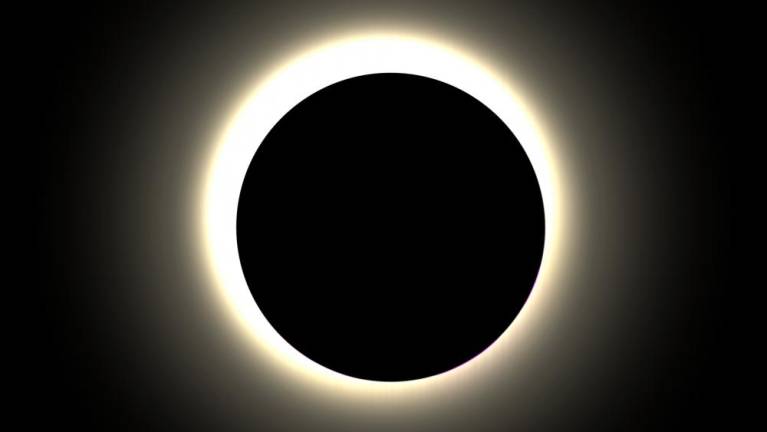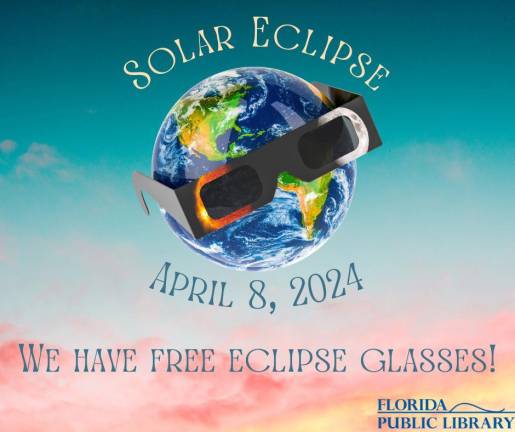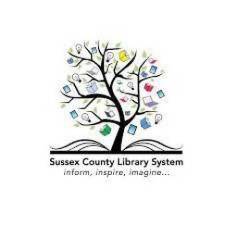The sun is about to pull another disappearing act across North America, turning day into night during a total solar eclipse.
The peak spectacle on April 8 will last up to 4 minutes, 28 seconds in the path of total darkness — twice as long as the total solar eclipse that dimmed U.S. skies in 2017.
This eclipse will take a different and more populated route, entering over Mexico’s Pacific coast, dashing up through Texas and Oklahoma, and crisscrossing the Midwest, mid-Atlantic and New England, before exiting over eastern Canada into the Atlantic.
An estimated 44 million people live inside the 115-mile-wide path of totality stretching from Mazatlán, Mexico to Newfoundland; about 32 million of them are in the U.S., guaranteeing jammed roads for the must-see celestial sensation.
The eclipse will allow many to share in the “wonder of the universe without going very far,” said NASA’s eclipse program manager Kelly Korreck.
What to know
Here’s what to know about April’s extravaganza and how to prepare:
What happens during the total solar eclipse?
The moon will line up perfectly between the Earth and the sun, blotting out the sunlight. It will slice a diagonal line from the southwest to the northeast across North America, briefly plunging communities along the track into darkness.
Fifteen U.S. states will get a piece of the action, albeit two of them — Tennessee and Michigan — just barely.
Among the cities smack dab in the action: Dallas; Little Rock, Arkansas; Indianapolis, Cleveland; Buffalo, New York; and Montreal — making for the continent’s biggest eclipse crowd.
Don’t fret if you don’t have front-row seats. Practically everyone on the continent can catch at least a partial eclipse. The farther from the path of totality, the smaller the moon’s bite will be out of the sun. In Seattle and Portland, Oregon, about as far away as you can get in the continental U.S., one-third of the sun will be swallowed.
Why is totality longer?
By a cosmic stroke of luck, the moon will make the month’s closest approach to Earth the day before the total solar eclipse. That puts the moon just 223,000 miles away on eclipse day.
The moon will appear slightly bigger in the sky thanks to that proximity, resulting in an especially long period of sun-blocked darkness.
What’s more, the Earth and moon will be 93 million miles from the sun that day, the average distance.
When a closer moon pairs up with a more distant sun, totality can last as long as an astounding 7 1/2 minutes. The last time the world saw more than seven minutes of totality was in 1973 over Africa. That won’t happen again until 2150 over the Pacific.
How do I safely watch the eclipse?
Sunglasses won’t cut it. Special eclipse glasses are crucial for safely observing the sun as the moon marches across the late morning and afternoon sky, covering more and more and then less and less of our star.
During totality when the sun is completely shrouded, it’s fine to remove your glasses and look with your naked eyes. But before and after, certified eclipse glasses are essential to avoid eye damage. Just make sure they’re not scratched or torn.
Cameras, binoculars and telescopes must be outfitted with special solar filters for safe viewing.
Bottom line: Never look at an exposed sun without proper protection any day of the year.
Party like it’s 2024
Towns up and down the path of totality are throwing star parties. Festivals, races, yoga retreats, drum circles and more will unfold at museums, fairgrounds, parks, stadiums, wineries, breweries and even one of Ohio’s oldest drive-in movie theaters and the Indianapolis Motor Speedway.
Besides looking up, you can attend a “space prom” in Texas Hill Country, get married at eclipse-themed ceremonies in Tiffin, Ohio, and Russellville, Arkansas, or brush up on moonwalking history at the Armstrong Air and Space Museum in Wapakoneta, Ohio — Neil Armstrong’s hometown.
Chasing science
As the eclipse unfolds, NASA will launch small rockets with science instruments into the upper atmosphere from Virginia and chase totality’s shadow from high-altitude planes.
Satellites and the International Space Station crew will attempt to capture the show from space.
There will be numerous livestreams for those stuck with clouds or outside the path.
When is the next total solar eclipse?
Full solar eclipses occur every year or two or three, often in the middle of nowhere like the South Pacific or Antarctic. The next total solar eclipse, in 2026, will grace the northern fringes of Greenland, Iceland and Spain.
North America won’t experience totality again until 2033, with Alaska getting sole dibs.
Then that’s it until 2044, when totality will be confined to Western Canada, Montana and North Dakota.
There won’t be another U.S. eclipse, spanning coast to coast, until 2045. That one will stretch from Northern California all the way to Cape Canaveral, Florida.
Aside from Carbondale, Illinois, in the crosshairs of both the 2017 and 2024 eclipses, it usually takes 400 years to 1,000 years before totality returns to the same spot, according to NASA’s Korreck.
Marcia Dunn is the aerospace writer for the Associated Press.
Don’t be left out in the dark
According to NASA, the eclipse begins in this region at 2:10 p.m. and ends at 4:36 p.m., with maximum coverage reached at 3:25 p.m.
The following is a list of local events related to eclipse on April 8:
March 30
Solar Viewing Family Day, 1 p.m. Saturday, March 30 at Maple Grange Park, 36 Maple Grange Road, Vernon. Pearl Observatory will have two telescopes set up for residents to view the sun and learn about solar flares, age and more. $10 fee per person. Payment of cash, check or money order must be sent in advance. Spaces are limited and on a first-come, first-served basis. Registration Link: https://forms.gle/7yJJ1JRAJpwT64X78For information, call (973) 764-4055 ext. 2261 or send email tomdowntain@vernontwp.com or mwahnon@vernontwp.com
April 8
The Sparta Middle School will hold a solar eclipse viewing party from 2 to 4:15 p.m. Students will have snacks, viewing glasses, T-Shirts, activities and a DJ to celebrate this special event that will not occur in for another 55 years.
The Friends of Wallkill River National Wildlife Refuge will set up their telescopes for the public to safely view the solar eclipse. This rare event starts at 2 p.m. The Refuge is located at 136 Owens Station Road in Sussex. For information, send email to wallkillfriends@gmail.com or leave a message at 973 702-7266 ext. 15.
Join Rich Cahayla-Wynne from 2:30 to 4:30 p.m. in the Carriage House courtyard at the New Jersey State Botanical Garden (NJBG) at Skylands in Ringwood to observe the eclipse. At the 3:24 p.m. maximum, New Jersey will see about 90 percent coverage, so it won’t go totally dark, but you’ll be able to see the moon covering much of the sun. Solar safety filters will be available, and solar safety glasses are available at the NJBG gift shop. Rain or clouds cancel. Free. Garden admission and parking are free. NBG/Skylands is on Morris Road in Ringwood. Call 973962-9534 or go online to njbg.org.
The public is invited to come to the Alumni Green in the center of the Middletown campus of SUNY Orange on April 8 to experience the solar eclipse.The Rowley Center for Science and Engineering (RCSE) is located at 10 East Conkling Ave., Middletown. Free parking is available in the garage at 3 East Conkling Ave. or in the lot at 24 Grandview Ave. Questions may be directed to Cultural Affairs at cultural@sunyorange.edu
Eclipse glasses are now available at the Tuxedo Park Public Library for (one pair per household). Drop by the library all day on Monday, April 8, for a special eclipse-themed snack. Call 845 351-2207.
NYS announces eclipse events and activities
Earlier this month, Gov. Kathy Hochul announced the eclipse events and activities scheduled at New York’s State Parks, in coordination with NASA.
According to the governor’s office, I LOVE NY has launched the multi-platform “Come for the Eclipse, Stay for New York” campaign “to present New York as THE place to be to witness this event.”
The campaign and a special eclipse website highlight viewing location information in the five regions that will experience the path of totality, a variety of attractions and special eclipse-related events happening across the state across its digital platforms including Instagram, Facebook, TikTok and Twitter/X.
A downloadable special edition eclipse poster is also available, created through I LOVE NY’s partnership with acclaimed artist and professional astronomer Dr. Tyler Nordgren.
Visit iloveny.com/eclipse for viewing locations and additional safety tips.
NYS offering free I LOVE NY eclipse glasses
Pick up your complimentary pair of free limited edition I LOVE NY eclipse glasses (two per person, while supplies last) at New York State Welcome Centers, select Thruway Rest Stops and other locations.
“While viewing the eclipse on April 8 it’s important to keep your eyes protected and follow these safety tips,” New York State Gov. Kathy Hochul’s office announced. “One of the best ways to view a solar eclipse without harming your eyes is by using International Organization for Standardization (ISO) 12312-2 certified eclipse glasses. Scroll down to find official I LOVE NY and other eclipse glasses, or visit the American Astronomical Society to find out how to purchase glasses from a trusted source.”
Ask a cashier or on-site staff for your free pair of glasses at the following locations:
Hudson Valley
Woodbury Commons, Market Hall 13, 498 Red Apple Court, Central Valley.
Plattekill Service Area (Open 24/7)
I-87 - NYS Thruway northbound between Exit 17 (Newburgh I-84) and Exit 18 (New Paltz).
Modena Service Area (Open 24/7)
I-87 - NYS Thruway southbound between Exit 18 (New Paltz) and Exit 17 (Newburgh I-84).
The sound of darkness
How can visually impaired and blind people experience a solar eclipse? There’s a thing for that. The technology is actually really cool and fairly easy to build.
LightSound Devices were developed for the 2017 solar eclipse, according to a posting on the New York State Department of Environmental Conservation’s website.
The device uses a technique called sonification, or the process of converting data to sound, which, in the case of a solar eclipse, means converting light intensity to sound. Simply stated, as the moon eclipses the sun during a solar eclipse, the sunlight begins to dim and the LightSound device will play a change in musical tone.
Because the device can be attached to headphones or to a speaker, individuals or large groups of people can listen to the same LightSound device all at once. The device can be powered by batteries (9V or rechargeable lithium-ion), or by connecting it to a laptop via USB.
Data can be collected and saved for later analysis or sonification when the device is connected to a computer.
A video of the 2019 eclipse in South America as experienced on a LightSound machine can be found on Youtube.
While DEC is not involved in the project, there are groups in New York State that are working with these devices for the 2024 eclipse. For more information about this project and the devices, as well as instructions for how to build your own, visit astrolab.fas.harvard.edu/LightSound
What the ancients believed
“In ancient cultures, solar eclipses were seen as apocalyptic prophecies, omens of the displeasure of the gods, periodic celestial coincidences, or some mixture of all three,” Joshua Rapp Learn wrote in an article published this month for Discover Magazine. “The events stopped wars, made temporary kings, and perhaps founded ancient cities.
“Solar eclipses may strike awe or even fear in people, especially those less versed in astronomy,” the writer continued. “After all, they can turn an ordinary bright, clear day into relative darkness as the moon slowly blocks the sun. In ancient times, people could have seen this as a sign the world would end if they were predisposed to thinking about such an apocalypse. But not all ancient cultures saw these eclipses in quite the same way.”
You can find the article online at https://www.discovermagazine.com/the-sciences/these-5-ancient-cultures-thought-solar-eclipses-were-omens-and-prophecies
What the ancients believed
“In ancient cultures, solar eclipses were seen as apocalyptic prophecies, omens of the displeasure of the gods, periodic celestial coincidences, or some mixture of all three,” Joshua Rapp Learn wrote in an article published this month for Discover Magazine. “The events stopped wars, made temporary kings, and perhaps founded ancient cities.
“Solar eclipses may strike awe or even fear in people, especially those less versed in astronomy,” the writer continued. “After all, they can turn an ordinary bright, clear day into relative darkness as the moon slowly blocks the sun. In ancient times, people could have seen this as a sign the world would end if they were predisposed to thinking about such an apocalypse. But not all ancient cultures saw these eclipses in quite the same way.”
You can find the article online at https://www.discovermagazine.com/the-sciences/these-5-ancient-cultures-thought-solar-eclipses-were-omens-and-prophecies


